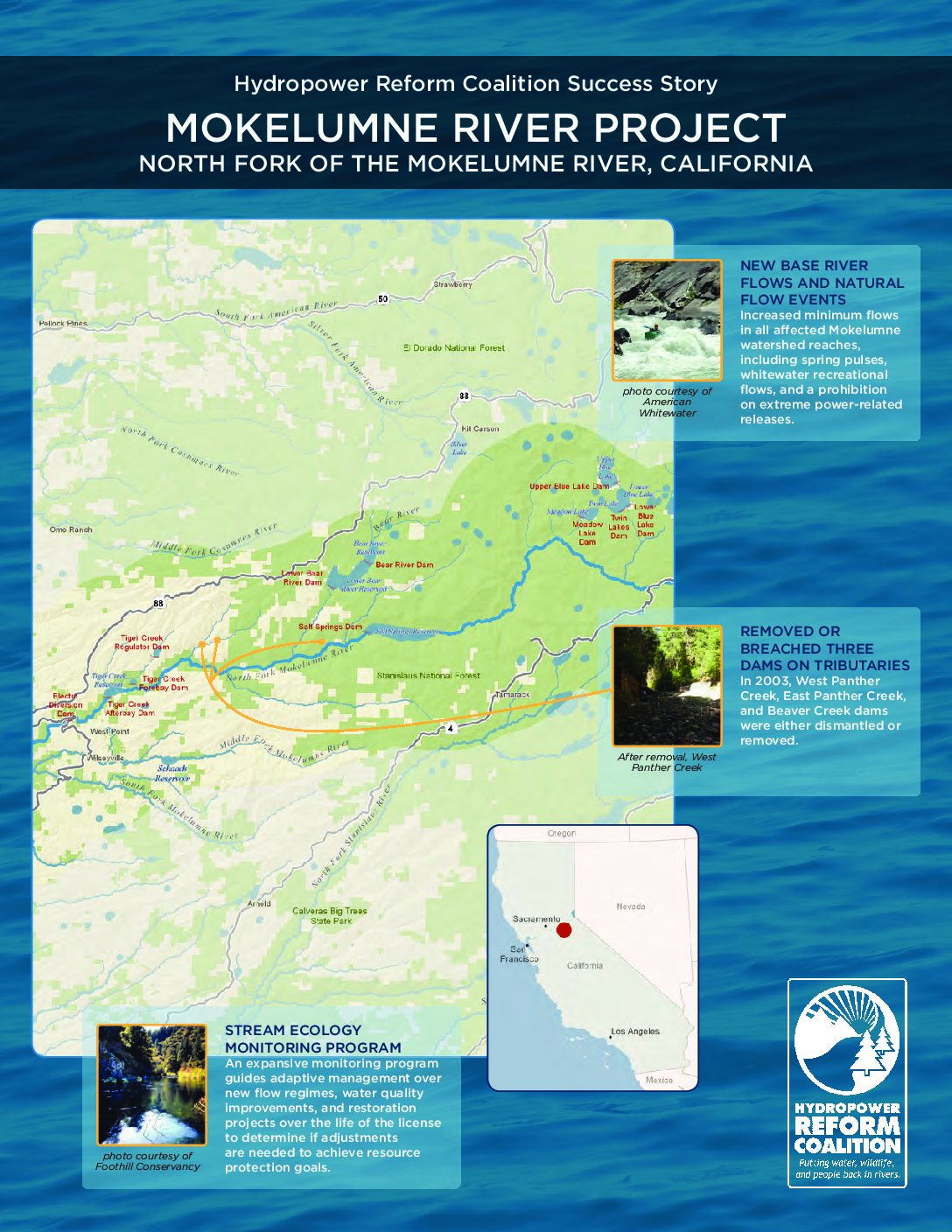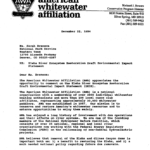The Mokelumne River basin drains 661 square miles high in the central Sierra Nevada Mountains. Its dominant tributary, the North Fork Mokelumne, cut through granite to create the Mokelumne River Canyon, encased in the Mokelumne Wilderness. The rugged scenery is defined by deep granitic canyons, volcanic ridges and peaks, and prominences such as the massive 1,200-foot Calaveras Dome – much like its neighbor, Yosemite.
While the North Fork is sparsely populated by people, it is heavily dammed and plumbed for hydropower development. In the 1920s and 1930s, a sprawling footprint was built, dominating the water course of over 90 miles of stream. Seven storage reservoirs, four powerhouses, and many tunnels and flumes recarved the watershed’s landscape to create the Mokelumne River Project. Two tunnels, the Tiger Creek conduit and the Electra tunnel, are together 25 miles long and transport water around the North Fork Mokelumne’s natural riverbed.
In 1972, Pacific Gas and Electric Company (PG&E) applied to renew its federal operating license with the Federal Energy Regulatory Commission (FERC). The original license, issued in 1925, was set to expire after 50 years. Before FERC could issue a new license, a municipality applied to take over the project in 1974, leading to ownership negotiations that were not resolved until 1990. Then, in 1987, a local county applied to construct a new hydropower project that would have occupied the same lands and rivers as the Mokelumne River Project. The county pursued the new project until 1995.
By 1999, the relicensing of the Mokelumne River Project had reached a critical point. Resource agencies and non-governmental organizations agreed that the information in hand about the hydropower project’s impact on the Mokelumne was too weak to support resource decisions for the next license. To try to bring this licensing process to an end, FERC held a public meeting in June 1999 to pull interests together. All parties at that meeting agreed to form a new settlement group – the Mokelumne Relicensing Collaborative – to try to resolve all streamflow issues within one year.
The Collaborative was successful, submitting a final settlement in July 2000 and breaking the 28-year deadlock. In October 2001, FERC issued a 30-year license, and the Mokelumne River finally received new management since the original license in 1925.
Under the settlement, PG&E agreed to comprehensive flows for all affected reaches. New flow requirements for each month of the year required that streams received minimum water at all times. Monthly adjustments in streamflows, mandated pulse flows in the spring, and ramping rates to limit how fast the flows can be raised or lowered, are all designed to mimic the pattern of natural seasonal changes and recession rates. PG&E also committed to limits on short-term power generation releases in the summer, and to abandoning the practice of using the river as a conduit for short-term surges of water during canal maintenance.
Thanks to special flow releases and new access points, four whitewater runs are now popularly used and predictable. Devil’s Nose, Electra, Tiger Creek, and Ponderosa Way vary from classic boater training reaches to advanced kayaking down the Mokelumne Falls. All runs have permanent, formal access points and available flow data to encourage enjoyment of the river.
In 2003, the West Panther Creek, East Panther Creek, and Beaver Creek dams were all dismantled or removed [pictured at right]. Rendered inoperable in the 1996 floods, the dams and facilities were selected for removal rather than repair. Over time, these creeks will be restored to their natural state: fish passage, sediment movement, a thriving macroinvertebrate community, and healthy riparian habitat.
To continue oversight of flows, water quality measures, and restoration work required by the license, the settlement established an Ecological Resource Committee, or ERC. The ERC meets regularly each month to discuss progress toward license achievements and results of the Stream Ecology Monitoring Program, an expansive program to study Mokelumne River resources continually and adjust management based on the study results. At the time of its creation, this adaptive management process was a pioneer, where relicensing usually focused on certainty. Today, Coalition members continue to serve on the ERC to guide the best possible license implementation for restoration of the magnificent Mokelumne.


 HRC or member-contributed
HRC or member-contributed